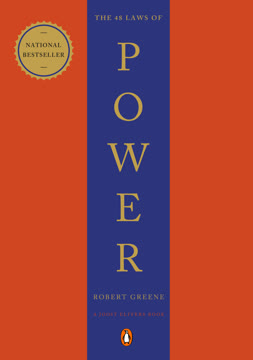Key Takeaways
1. Small habits compound into remarkable results
Habits are the compound interest of self-improvement.
Atomic habits accumulate. Small, consistent changes in behavior, when compounded over time, can lead to significant improvements in one's life. This concept is similar to compound interest in finance, where small, regular investments grow exponentially over time. In habit formation, tiny improvements of just 1% each day can result in massive changes over months and years.
The power of consistency. The key to harnessing the power of atomic habits lies in their consistency rather than their individual impact. For example:
- Reading one page a day leads to 365 pages per year
- Saving a small amount daily can result in substantial wealth over decades
- Making one sales call per day can transform a business over time
By focusing on small, manageable changes and maintaining them consistently, individuals can achieve remarkable results in various aspects of their lives, from health and productivity to relationships and personal growth.
2. Identity-based habits are more sustainable than outcome-based ones
The ultimate form of intrinsic motivation is when a habit becomes part of your identity.
Shift your self-image. Instead of focusing solely on what you want to achieve, concentrate on who you wish to become. This approach creates a powerful intrinsic motivation that makes habits more likely to stick. For example:
- Instead of "I want to lose weight," think "I am someone who prioritizes health"
- Rather than "I want to write a book," consider "I am a writer"
Habits reinforce identity. As you consistently perform habits aligned with your desired identity, you accumulate evidence that reinforces this self-image. This creates a positive feedback loop:
- You perform a habit aligned with your desired identity
- You gain evidence supporting this identity
- Your belief in the identity strengthens
- You are more motivated to perform habits aligned with the identity
By focusing on identity-based habits, you create a sustainable system for long-term behavior change that goes beyond short-term goals and outcomes.
3. The Four Laws of Behavior Change shape habit formation
Make it obvious. Make it attractive. Make it easy. Make it satisfying.
The habit loop. Habits follow a predictable pattern: cue, craving, response, and reward. The Four Laws of Behavior Change correspond to each step of this loop, providing a framework for creating good habits and breaking bad ones:
- Make it obvious (cue): Clearly identify the habit's trigger
- Make it attractive (craving): Increase the habit's appeal
- Make it easy (response): Reduce friction to perform the habit
- Make it satisfying (reward): Provide immediate gratification
Applying the laws. To create a good habit, use the positive version of each law. To break a bad habit, use the inverse:
- Make it invisible
- Make it unattractive
- Make it difficult
- Make it unsatisfying
By systematically applying these laws, you can design your environment and routines to support desired behaviors and discourage unwanted ones.
4. Make habits obvious to increase likelihood of action
Many people think they lack motivation when what they really lack is clarity.
Environment design. Your surroundings play a crucial role in shaping your behavior. By making cues for desired habits more visible and prominent, you increase the likelihood of taking action. Some strategies include:
- Placing a water bottle on your desk to encourage hydration
- Leaving your gym clothes out to prompt exercise
- Using visual reminders like post-it notes or phone wallpapers
Implementation intentions. Clearly stating when and where you'll perform a habit dramatically increases the chances of follow-through. Use the formula: "I will [BEHAVIOR] at [TIME] in [LOCATION]." For example:
- "I will meditate for 5 minutes at 7 AM in my living room"
- "I will read for 30 minutes at 9 PM in bed"
By making habits obvious through environmental cues and specific plans, you reduce the need for motivation and willpower, making it easier to stick to your desired behaviors.
5. Increase habit attractiveness through temptation bundling
Temptation bundling works by linking an action you want to do with an action you need to do.
Pair enjoyable activities. Combine habits you need to build with activities you already enjoy. This makes the necessary habit more appealing and increases the likelihood of follow-through. Examples include:
- Watching your favorite TV show only while exercising
- Listening to audiobooks only while cleaning
- Enjoying a favorite snack only when studying
Leverage existing motivations. Use the power of immediate rewards to reinforce long-term habits. The brain's reward system prioritizes instant gratification, so by bundling an immediate pleasure with a long-term beneficial habit, you can hack your motivation system.
Create a ritual. Develop a pre-habit routine that you enjoy, which signals the start of your desired behavior. This could be:
- Brewing a special tea before writing
- Playing energizing music before working out
- Taking three deep breaths before starting work
By increasing the attractiveness of habits through temptation bundling and associated pleasures, you make it easier to overcome initial resistance and build consistent behaviors.
6. Simplify habits to make them easier to perform
The central idea is to create an environment where doing the right thing is as easy as possible.
Reduce friction. Identify and eliminate obstacles that make your desired habits more difficult. The easier a habit is to perform, the more likely you are to do it consistently. Strategies include:
- Laying out workout clothes the night before
- Meal prepping for the week ahead
- Setting up automatic savings transfers
The Two-Minute Rule. When starting a new habit, make it so easy you can't say no. Scale down your habits to actions that take two minutes or less to complete. For example:
- "Read for an hour" becomes "Read one page"
- "Run 5 miles" becomes "Put on running shoes"
- "Write a book" becomes "Write one sentence"
Habit shaping. Gradually increase the difficulty of your habits over time. Start with the two-minute version, then slowly expand. This allows you to build consistency and momentum before tackling more challenging versions of the habit.
By simplifying habits and reducing barriers to action, you increase the likelihood of consistent performance, which is crucial for long-term success.
7. Make habits immediately satisfying to reinforce behavior
What is immediately rewarded is repeated. What is immediately punished is avoided.
Immediate rewards. The human brain prioritizes immediate outcomes over long-term consequences. To make habits stick, attach immediate rewards to behaviors with long-term benefits. Examples include:
- Treating yourself to a smoothie after working out
- Using a habit tracker and marking off completed tasks
- Celebrating small wins with a friend or family member
Habit contract. Create a verbal or written agreement that imposes negative consequences for failing to follow through on your habits. This adds an immediate cost to skipping your habit. Strategies include:
- Paying a friend if you miss a workout
- Committing to a public declaration if you fail to meet a goal
- Donating to a cause you dislike when you break a habit
Reward bundling. Similar to temptation bundling, but focused on the post-habit reward. Allow yourself to enjoy a specific pleasure only after completing your desired habit. This creates a strong association between the behavior and the reward.
By making habits immediately satisfying, you align your present actions with your long-term goals, increasing the likelihood of consistent behavior.
8. The environment shapes behavior more than willpower
You do not rise to the level of your goals. You fall to the level of your systems.
Design for success. Instead of relying solely on motivation and willpower, create an environment that supports your desired habits. This involves:
- Removing temptations and obstacles for good habits
- Adding friction and barriers to bad habits
- Surrounding yourself with people who embody your desired behaviors
Choice architecture. The way options are presented significantly influences decision-making. Apply this concept to your own life by:
- Making healthy foods more visible and accessible in your kitchen
- Placing your phone in another room while working
- Setting default options that align with your goals (e.g., automatic savings)
Habit fields. Different environments trigger different behaviors. Create dedicated spaces for specific activities to strengthen habit associations:
- A specific corner for reading
- A designated home office for work
- A meditation cushion for mindfulness practice
By shaping your environment to support desired behaviors, you reduce the need for willpower and make good habits more automatic and effortless.
9. Habit stacking builds upon existing routines
One of the best ways to build a new habit is to identify a current habit you already do each day and then stack your new behavior on top.
Leverage existing behaviors. Identify habits you already perform consistently and use them as triggers for new habits. This makes it easier to remember and execute new behaviors. The formula is: "After [CURRENT HABIT], I will [NEW HABIT]." Examples include:
- After I pour my morning coffee, I will meditate for one minute
- After I take off my work shoes, I will immediately change into workout clothes
- After I sit down to dinner, I will say one thing I'm grateful for
Create behavior chains. By stacking multiple habits together, you can create a sequence of behaviors that flow naturally from one to the next. This reduces decision fatigue and makes it easier to perform multiple habits consistently.
Contextual cues. Use specific locations or times of day as triggers for habit stacks. This creates a strong association between the context and the desired behaviors. For example:
- When I get to work, I will review my top three priorities for the day
- Before I go to bed, I will lay out my clothes for the next day
Habit stacking allows you to build new behaviors more easily by anchoring them to existing routines, increasing the likelihood of consistent performance.
10. The Two-Minute Rule helps overcome procrastination
When you start a new habit, it should take less than two minutes to do.
Start small. The Two-Minute Rule states that the initial version of any new habit should be incredibly easy to do. This helps overcome the inertia of starting and builds momentum. Examples include:
- "Write a book" becomes "Write one sentence"
- "Run a marathon" becomes "Put on your running shoes"
- "Learn to play the guitar" becomes "Play one chord"
Gateway habits. These two-minute actions serve as entry points to more substantial behaviors. Once you've started, it's easier to continue. The goal is to make habits as easy to start as possible, removing barriers to action.
Scale up gradually. As you build consistency with the two-minute version, slowly increase the duration or difficulty of the habit. This allows you to progress while maintaining the momentum you've built. For instance:
- One sentence becomes one paragraph, then one page
- Putting on running shoes becomes a 5-minute walk, then a 10-minute jog
The Two-Minute Rule helps overcome procrastination by making habits so easy to start that you can't say no, leading to more consistent behavior change.
11. Mastery requires balancing habits with deliberate practice
Habits + Deliberate Practice = Mastery
Automation and improvement. While habits are essential for consistency and efficiency, they can lead to complacency if not balanced with deliberate practice. To achieve mastery:
- Build strong, consistent habits as a foundation
- Engage in deliberate practice to continually improve and push boundaries
- Regularly reflect on and adjust your approach
The Goldilocks Rule. To maintain motivation and progress, work on tasks of "just manageable difficulty" – not too easy, not too hard. This keeps you engaged and challenged without becoming overwhelmed or bored.
Embrace boredom. Mastery often requires performing the same actions repeatedly, even when they're no longer novel or exciting. Developing the ability to stick with habits even when they're boring is crucial for long-term success. Strategies include:
- Setting specific goals for each practice session
- Tracking progress to maintain motivation
- Focusing on the process rather than just the outcome
By balancing the efficiency of habits with the growth mindset of deliberate practice, you can achieve mastery in your chosen field while avoiding stagnation.
Last updated:
FAQ
What's Atomic Habits about?
- Focus on Habit Formation: Atomic Habits by James Clear explores how small, incremental changes in habits can lead to significant improvements in life.
- Four Laws of Behavior Change: Clear introduces a framework consisting of four laws: Make it Obvious, Make it Attractive, Make it Easy, and Make it Satisfying.
- Identity Change: The book discusses how habits are tied to identity, suggesting that true behavior change comes from focusing on who you want to become.
Why should I read Atomic Habits?
- Practical Strategies: The book provides actionable strategies for habit formation that can be applied in various aspects of life.
- Long-term Results: By focusing on small changes, readers can achieve lasting results over time.
- Inspiration and Motivation: Clear shares personal anecdotes and success stories that inspire readers to take action.
What are the key takeaways of Atomic Habits?
- Small Changes Matter: Habits are the compound interest of self-improvement, leading to significant progress over time.
- Identity-Based Habits: True behavior change is identity change, focusing on who you want to become.
- Environment Design: The environment plays a crucial role in shaping habits, making good habits easier and bad habits harder.
What are the best quotes from Atomic Habits and what do they mean?
- "You do not rise to the level of your goals. You fall to the level of your systems.": Achieving goals is more about the systems in place than ambition.
- "Habits are the compound interest of self-improvement.": Small, consistent actions lead to significant results over time.
- "Every action you take is a vote for the type of person you wish to become.": Aligning habits with your desired identity shapes your self-image.
What are the Four Laws of Behavior Change in Atomic Habits?
- Make It Obvious: Emphasizes the importance of cues in habit formation by making them visible and clear.
- Make It Attractive: Enhances the appeal of habits by associating them with positive experiences or rewards.
- Make It Easy: Reduces friction associated with good habits, making them easier to adopt.
- Make It Satisfying: Highlights the importance of immediate rewards in reinforcing habits.
How does the Two-Minute Rule work in Atomic Habits?
- Start Small: When starting a new habit, it should take less than two minutes to do.
- Gateway Habit: Focus on a small version of the habit to create a "gateway habit" leading to more significant actions.
- Consistency Over Perfection: Encourages consistency, allowing you to build the habit gradually.
How can I apply the concept of identity-based habits from Atomic Habits?
- Define Your Desired Identity: Decide who you want to become, such as "I am a runner."
- Align Habits with Identity: Focus on habits that reinforce this identity, like running regularly.
- Use Evidence to Support Change: Each habit performed gathers evidence that reinforces your desired identity.
What role does environment design play in Atomic Habits?
- Cues and Context: The environment significantly influences habits by including cues for good habits and removing cues for bad ones.
- Reduce Friction: Make good habits easier to perform and bad habits harder by designing your environment.
- Create a Supportive Space: A well-designed environment primes you for success, supporting your goals.
How can I break a bad habit according to Atomic Habits?
- Make It Invisible: Reduce exposure to cues that trigger bad habits.
- Make It Unattractive: Reframe your mindset to highlight the negative aspects of the bad habit.
- Increase Friction: Make it more difficult to engage in the bad habit by creating barriers.
What is the Habit Loop in Atomic Habits?
- Four-step Process: Consists of Cue, Craving, Response, and Reward, helping to understand habit formation.
- Cue Triggers Behavior: The cue initiates the habit, with awareness preceding desire.
- Reward Reinforces Habits: The positive outcome following the response reinforces the behavior.
What is the Goldilocks Rule in Atomic Habits?
- Optimal Challenge Level: Humans experience peak motivation with tasks that are just manageable in difficulty.
- Flow State: Achieving a flow state occurs when fully immersed in an activity at the edge of your abilities.
- Balance Between Success and Failure: Emphasizes maintaining a balance between winning and losing for optimal motivation.
How can I track my habits effectively according to Atomic Habits?
- Use a Habit Tracker: Measure whether you completed a habit by marking an X on a calendar.
- Visual Cues: Tracking progress provides visual proof of efforts, which can be motivating.
- Keep It Simple: Make tracking easy and automatic, combining it with existing habits.
Review Summary
Readers highly praise Atomic Habits, rating it 4.29/5 on Goodreads. They find it engaging, motivating, and effective in helping them make positive changes. Many appreciate the practical activities, scientific basis, and inspirational stories. Reviewers note its usefulness in overcoming trauma, refocusing, and improving daily life through small habit changes. Some readers have revisited the book multiple times, finding its advice on spiritual happiness and life transformation valuable. Overall, it's seen as an excellent guide for personal development and habit formation.
Similar Books










Download PDF
Download EPUB
.epub digital book format is ideal for reading ebooks on phones, tablets, and e-readers.






